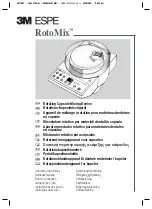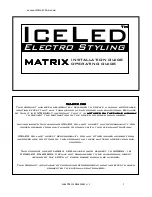
Lake Shore Model 370 AC Resistance Bridge User’s Manual
CHAPTER 2
BACKGROUND
2.0 GENERAL
This chapter provides background information related to the Model 370 AC Resistance Bridge and bridge measurements
in general. It is intended to give the user insight into the benefits and limitations of the instrument and help apply the
features of the Model 370 to a variety of experimental challenges. For information on how to install the Model 370
please refer to Chapter 3. Instrument operation information is contained in Chapter 4.
2.1
USEFUL TEMPERATURE RANGE
The Model 370 is not an ordinary ohmmeter. As described throughout this manual, every effort has been made to
measure resistance with as little power as possible entering the resistor. The need for such careful attention is most
evident at low temperatures, particularly below 1 K. The instrument is not limited to those applications and is useful in
applications above 1 K when excitation power is critical. When excitation power is not critical, however, alternatives
may be available that provide faster readings or lower cost.
The lowest temperature at which the Model 370 can make useful resistance measurements is difficult to define. In a
practical sense, the instrument is limited by its need for four electrically conductive leads to be attached to a resistor and
that resistor attached to a cold surface. Heat conduction and noise pick-up in the resistor leads limit the lowest
temperature that can be achieved in this environment, even before an instrument is attached. The diminishing thermal
contact between the resistor and cold surface at lower and lower temperatures only exaggerate the problem. In general,
resistance bridge measurements are considered routine down to 100 mK in a capable cryogenic cooling system. With
careful installation of a high quality bridge like the Model 370 it is not difficult to achieve 50 mK. Below that, each
detail of the overall system has to be optimized to a low end of between 10 and 20 mK.
2.2 TEMPERATURE
SCALES
Temperature conversions at such low temperatures can raise even more questions than resistance measurements. One
reason is the delay in getting a recognized temperature standard for very low temperatures. As of the writing of this
manual, the International Temperature Scale of 1990 (ITS-90) is the most current effort to define an internationally
accepted temperature scale. It is based on primary thermometers and fixed temperature points. A detailed discussion of
ITS-90, including interpolation instruments and equations, was published by the National Institute of Standards and
Testing (NIST) as Technical Note 1265, “Guidelines for Realizing the International Temperature Scale of 1990
(ITS-90)” by B.W. Magnum and G.T. Furukawa.
Unfortunately for those working at lower temperature, ITS-90 is only defined down to 650 mK. In the absence of a
recognized international standard, those knowledgeable in the field have created a working standard below 650 mK.
Lake Shore has worked closely with NIST to create a means of interpolating between superconducting fixed points using
a secondary standard germanium resistance thermometer (GRT). The process has been verified by other laboratories to
match accepted working standards to within a few millikelvin down to a temperature of 48 mK. Lake Shore presently
calibrates temperature sensors down to 50 mK using this method. We are looking forward to an extended low
temperature standard in 2002.
2.3
CRYOGENIC COOLING SYSTEM TERMINOLOGY
There are many different cryogenic cooling systems used in laboratories today and it would be impossible to describe
them all in this manual. This section briefly illustrates the three most common cooling systems capable of reaching
temperatures below 1 K. This is an attempt to demonstrate how the Model 370 can be integrated into these systems for
resistance measurement, temperature measurement and temperature control. It is hoped that from these examples, those
knowledgeable in cryogenic techniques will become familiar with the terminology used throughout this manual and the
intended operation of many of the instrument features.
Theory of Operation
2-1
















































